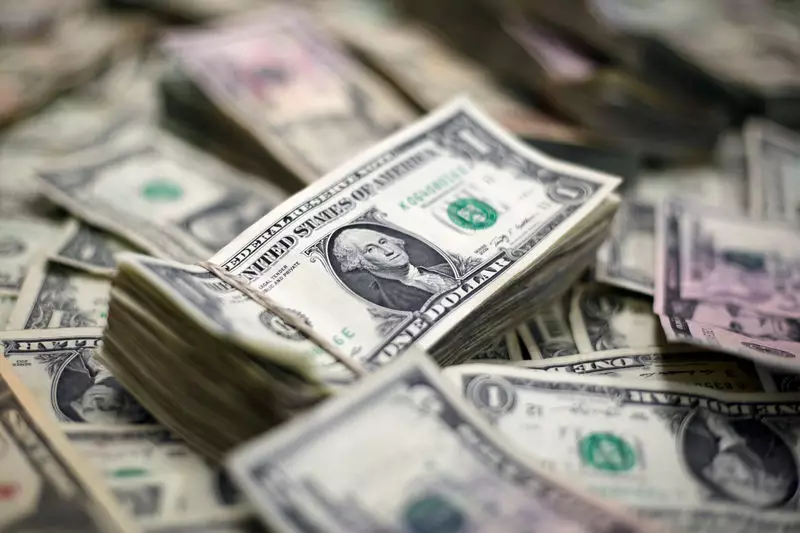The U.S. dollar faced challenges on Thursday as it struggled to maintain its position amidst weak economic data and the looming possibility of a significant interest rate cut by the Federal Reserve. The Dollar Index, which tracks the greenback against other major currencies, was down by 0.2% at 101.139, signaling a retreat from its recent two-week high. This decline comes in the wake of disappointing U.S. economic indicators that have heightened concerns about the largest economy in the world facing a hard landing, prompting expectations of aggressive monetary policy easing from the U.S. central bank.
The recent ISM manufacturing survey revealed that the sector continued to remain in contraction territory, while U.S. job openings experienced a significant drop to a 3-1/2-year low in July. These figures suggest that the labor market may be losing momentum, further fueling speculation about the need for a more substantial rate cut by the Federal Reserve. Traders are now predicting a 45% chance of a 50 basis point rate cut at the upcoming meeting and are pricing in over 100 bps worth of cuts by the end of the year.
In Europe, the EUR/USD pair traded higher at 1.1086, with the euro receiving support from the unexpected rise in German industrial orders for the month of July. German orders surged by 2.9% from the previous month, surpassing expectations of a 1.5% decline. Additionally, data revisions for June showed a 4.6% increase, further boosting confidence in the euro. Eurozone retail sales data for July are anticipated to show improvement after a slight drop in the previous month.
Meanwhile, the GBP/USD pair climbed to 1.3157, reflecting a 0.1% increase, and a remarkable 3.5% gain over the past month. This surge can be attributed to expectations that the Bank of England will maintain high-interest rates for a longer duration compared to the United States, boosting the appeal of the British pound.
In Asia, the USD/JPY pair declined to 143.62, with the yen benefiting from safe-haven demand and the perception that the Bank of Japan may raise rates despite the global trend of easing monetary policies. The yen reached a one-month high earlier in the session and has seen an increase of around 1% for the week. On the other hand, the USD/CNY pair traded lower at 7.0999, remaining close to its strongest level in over a year.
The U.S. dollar’s performance is heavily influenced by economic data and central bank policies, both domestically and internationally. The ongoing concerns about the strength of the U.S. economy and the potential response from the Federal Reserve continue to impact the dollar’s standing in the global currency markets. Traders and investors are closely monitoring these developments to navigate the uncertainties surrounding the future movements of the greenback and other major currencies.

